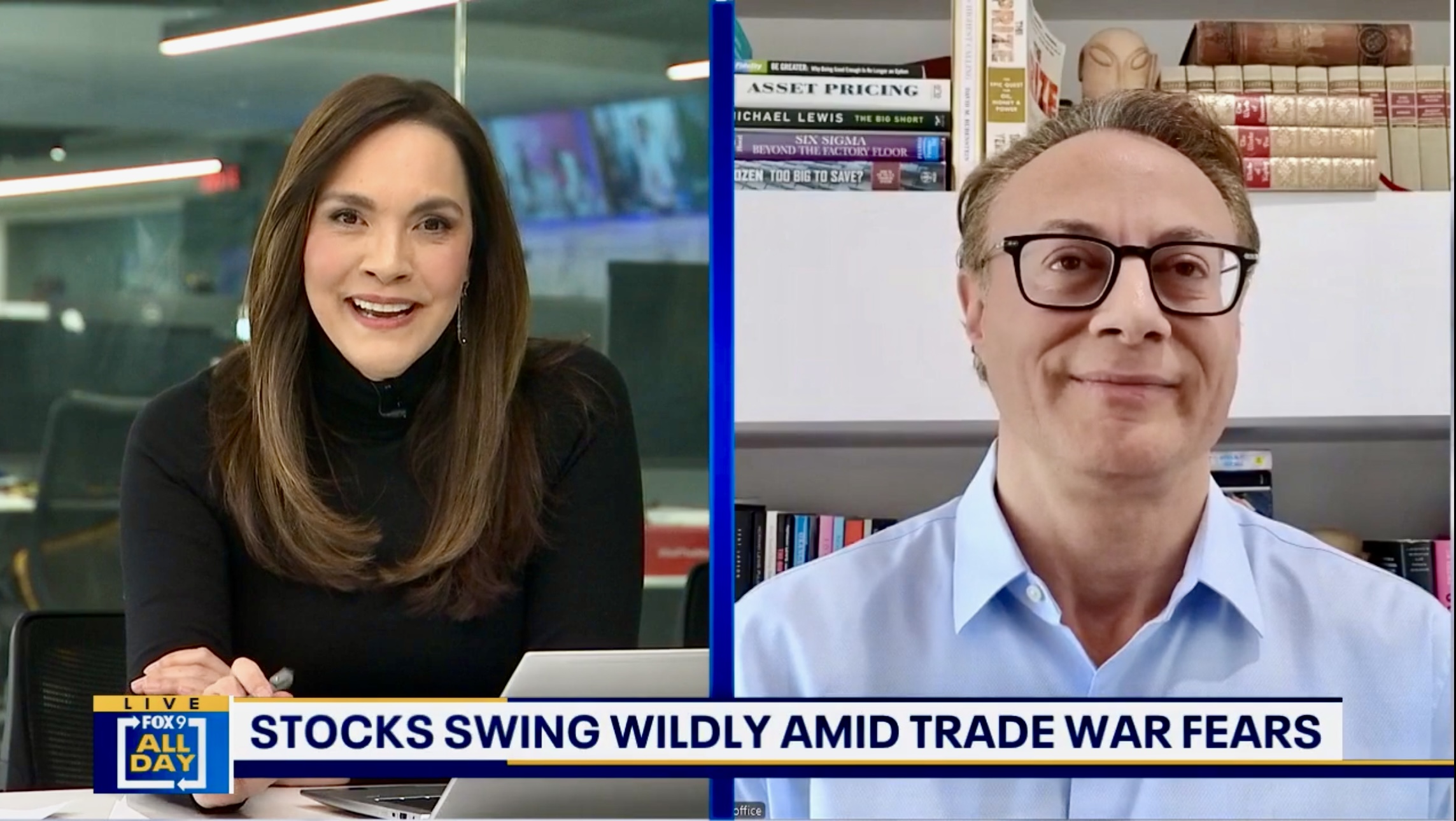Are bank bail-outs out and bail-ins in?
Running Point Capital and its chief investment officer, Michael Ashley Schulman, CFA, were referenced by Fortune Recommends in an article — by Jim Probasco, “Forget bailouts. Here’s how a bank ‘bail-in’ works” — regarding what bank bail-ins are, who they affect, and what you need to know to protect your assets.
What is a bail-in?
A bank bail-in is a process by which a troubled bank’s investors, shareholders, and depositors are forced to bear some of the losses incurred by the bank, instead of external players, taxpayers, or the government bearing the entire cost. In other words, instead of using government or external money to rescue a failing bank, the bank’s own creditors and depositors are used to finance its recovery. Under a bail-in, the bank’s shareholders and creditors, including bondholders and depositors with balances above a certain threshold, may be required to exchange some of their holdings for equity in the bank or have a portion of their holdings written off in order to recapitalize the bank. This helps to ensure that the bank has sufficient capital to continue operating and that losses are distributed among stakeholders. It makes regular banks feel more like mutual banks, where they are mutually owned by their depositors.
Can you bank on a bail-in?
Bank bail-ins are legal in the United States under the Dodd-Frank Wall Street Reform and Consumer Act of 2010. In 2018, the Dodd-Frank Act was amended by the Economic Growth, Regulatory Relief, and Consumer Protection Act (EGRRCPA), which made some changes to the Orderly Liquidation Authority (OLA) provision.
Bail-ins are a strong political statement. The use of bail-ins has not occurred in the U.S. but has become more common globally since the great financial crisis of 2008, as many governments and regulators limit the exposure of taxpayers to the risks of bank failures and simultaneously attempt to limit their own political fallout that comes with the “perception” or rescuing fat cat banks or financiers. Bail-ins are now a key part of many countries’ resolution regimes (e.g., Cyprus in March 2013 to unwind Laiki Bank, Italy December 2015 to rescue four small banks, Spain in June 2017 to rescue Banco Popular, Germany in February 2021 to rescue Greensill Bank) for dealing with failing banks.
Based on what we’ve witnessed in Europe, the likelihood of a U.S. bail-in may increase over time, especially if a particular bank is seen as having taken egregious risks.
FDIC insurance should remain valid
Hypothetically, in the case of a U.S. bail-in, FDIC insurance would probably still apply to the first $250,000 per insured depositor, per deposit category, but beyond that depositors might take a haircut on their holdings or see some holdings exchanged for bank securities (equity or debt). It would probably be yet another stunning blow to bank confidence. If you have multiple accounts at the same bank or financial institution, clarify with your banker regarding protection limits and possible excess deposits above those limits. The FDIC’s Electronic Deposit Insurance Estimator can also help you calculate insurance coverage based on account balances and ownership categories.
According to the FDIC, “Deposits held in different ownership categories are separately insured, up to at least $250,000, even if held at the same bank. For example, a revocable trust account (including living trusts and informal revocable trusts commonly referred to as payable on death (POD) accounts) with one owner naming three unique beneficiaries can be insured up to $750,000.”
Consider other measures for safety
To stay reasonably safe, consider keeping deposits within insured limits per tax ID number, diversify deposits, and consider other short-term investment options that probably offer better yields like money market funds and T-Bills.
Additionally, the Certificate of Deposit Account Registry Service (CDARS) can be used to work around FDIC insurance limits. A CDARS placement and custodial agreement invests money through a network of members distributing your CD holdings to various banks in order to stay below FDIC limits at each member bank. You could use this to place millions of dollars and still be FDIC protected, however you are still limited by the rules and illiquidity provisions that come with certificates of deposit (CDs).
T-Bills
For many of our families with large sums of personal or business cash Running Point has recommended portfolios of Treasury Bills (T-Bills) from 1 to 6 months in maturity based on individual liquidity needs. Depending on how they are laddered, the T-Bill portfolios can yield approximately 0.75% to 1.5% more than some money market accounts and T-Bill income is not subject to state income tax whereas bank deposit income, bank CD income, and some of the higher yielding money market accounts that invest in short-term corporate and foreign securities are subject to state income tax. That can make a huge after-tax income difference for our families in high-tax states like California or New York.
Quoted article excerpts are below:
In 2018, the amount of cash reserves banks were required to have under Dodd-Frank was lowered with passage of the Economic Growth, Regulatory Relief, and Consumer Protection Act (EGRRCPA) by the Trump administration.
“One of the notable changes [of the Economic Growth Act] was to limit the circumstances under which the OLA could be used to bail out failing banks,” says Michael Ashely Schulman, chief investment officer at Running Point Capital Advisors. “Specifically, the EGRRCPA made it more difficult to use taxpayer money to rescue dodgy or failing banks, and instead emphasized the use of the bail-in mechanism to distribute losses to shareholders and creditors. Thus, it strengthened the emphasis on bank bail-ins.”
“Bail-ins are a strong political statement,” notes Schulman. “They limit the exposure of taxpayers to the risks of bank failures and simultaneously attempt to limit [the government’s] political fallout that comes with the perception of rescuing fat-cat banks or financiers.”
1. Ensure you’re covered
Schulman says if you have multiple accounts at the same bank or financial institution, you should clarify with your banker whether any of that money is uninsured. He also notes that the FDIC’s Electronic Deposit Insurance Estimator (EDIE) can help you calculate insurance coverage based on account balances and ownership categories.
2. Diversify your deposits
If you have deposits that exceed FDIC limits, it can be a good idea to spread that money across other financial institutions.
Schulman notes that the Certificate of Deposit Account Registry Service (CDARS) is also one way to work around FDIC insurance limits. “A CDARS placement and custodial agreement invests money through a network of members distributing your CD holdings to various banks in order to stay below FDIC limits at each member bank,” he explains. “You could use this to place millions of dollars and still be FDIC-protected.” However, he adds, you’re still limited by the rules and illiquidity provisions that come with CDs.

“If you owe the bank $100, that’s your problem. If you owe the bank $100 million, that’s the bank’s problem.”
old expression
Disclosure: The opinions expressed are those of Running Point Capital Advisors, LLC (Running Point) and are subject to change without notice. The opinions referenced are as of the date of publication, may be modified due to changes in the market or economic conditions, and may not necessarily come to pass. Past performance is not indicative of future results. Forward-looking statements cannot be guaranteed. Running Point is an investment adviser registered with the U.S. Securities and Exchange Commission. Registration does not imply a certain level of skill or training. More information about Running Point’s investment advisory services and fees can be found in its Form ADV Part 2, which is available upon request. RP-23-34


